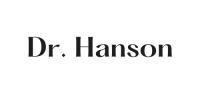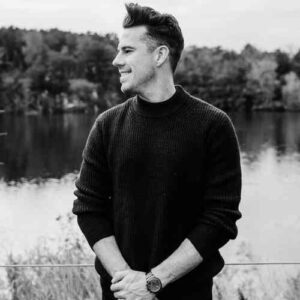Dry needling, a technique utilized in managing muscle pain, has a fascinating history tracing back to the mid-20th century but with a deep history going back 2000 years under the term “Orthopedic Acupuncture.
Orthopedic acupuncture has a long history rooted in ancient Chinese medicine, with its foundational principles eloquently described in a classical text known as the Huangdi Neijing or the Yellow Emperor’s Inner Classic. This ancient Chinese medical text, deemed a fundamental doctrinal source for Chinese medicine for over two millennia, comprises two main texts: the Suwen (Basic Questions) and the Lingshu (Spiritual Pivot). The Lingshu discusses acupuncture therapy in great detail, portraying the depth of knowledge and the poetic language that characterized the ancient descriptions of acupuncture practices.
The correlation between acupuncture points and trigger points has been a subject of research and discussion within the field of physical therapy and traditional Chinese medicine. Various studies have sought to explore the anatomical and clinical correspondence between these two kinds of points.
- A study published in PubMed found a notable degree of correspondence, with a 71% correlation between trigger points and acupuncture points for pain based on spatial distribution and associated pain pattern1.
- Another article reported that out of 234 acupuncture points with corresponding trigger points, 186 (79.5%) had clinical indications for regional pain similar to trigger point therapy. Among these, 152 (82%) were classical acupuncture points, while the remaining were categorized as miscellaneous or new acupuncture points2.
- Research highlighted on ResearchGate revealed that out of 221 trigger point region-classical acupuncture point pairs, 180 (81.5%) demonstrated complete or near-complete correlation. Additionally, 9.5% of point pairs partially showed correlation regarding distributions of their myofascial referred-pain patterns34.
- In a 1977 study mentioned on ScienceDirect, researchers reported a 71% correlation between trigger points and acupuncture points, reinforcing the significant anatomical correspondence between these points5.
These findings elucidate a substantial correlation between acupuncture points and trigger points, particularly in the context of pain management and treatment. The clinical implications of this correlation are significant as they bridge traditional Chinese medicine practices with modern physical therapy techniques, providing a nuanced understanding of pain and its management through minimally invasive interventions like acupuncture and dry needling.
The term “dry needling” is credited to Janet G. Travell, who introduced it in her 1983 book “Myofascial Pain and Dysfunction: Trigger Point Manual” to differentiate between two hypodermic needle techniques employed during trigger point therapy. This terminology was aimed at distinguishing the new method from “wet” trigger point injections, which were common at the time. These “wet” injections involved administering medication, while “dry” needling used a fine filament needle without injecting any substance.
The journey of dry needling took a significant turn in 1979 when Karel Lewitt published an article titled “The Needle Effect In The Relief Of Myofascial Pain.” Lewitt’s work highlighted the analgesic effects achieved by needling alone, marking a pivotal moment in the evolution of dry needling.
Dr. Travell’s early work in the 1940s had already set a foundation by identifying “trigger points” and establishing the connection between specific nerves, neural hyperactivity, and pain in tender muscle and fascial areas.
As the technique evolved, the specifics of dry needling, such as needle types and methodologies, diverged from traditional acupuncture, despite both targeting muscular trigger points to alleviate pain. The tools of the trade also saw changes; for instance, Travell preferred using a 1.5-inch hypodermic needle for trigger point therapy instead of an acupuncture needle due to its strength and tactile feedback which facilitated precise injections.
Dr. C. Chan Gunn made significant contributions to the field of dry needling through his development of Intramuscular Stimulation (IMS), a diagnostic and treatment model for neuropathic myofascial pain. This method works by stimulating spinal reflexes to reverse muscle contractures using fine, flexible acupuncture-style needles. Although these shortened muscles aren’t visible in MRI or X-ray images, trained IMS practitioners can feel tense muscles and target irritated nerves1.
Gunn’s approach, known as Gunn Intramuscular Stimulation (Gunn IMS), is based on the neuropathic dysfunction model he developed. It represents a total body system for diagnosing and treating persistent myofascial pain syndromes, encompassing muscle, joint, tendon, bursal, fascial, neural, and biomechanical problems through the use of intramuscular dry needling2. His methodology considers myofascial pain to be secondary to neuropathy. The intramuscular stimulation dry needling approach by Gunn was among the first medical dry needling approaches, marking a significant milestone in the field3.
Dr. Gunn’s pioneering work on the concept of pain following neuropathy led to a major shift in the diagnosis and treatment of pain. He founded The Institute for the Study and Treatment of Pain (iSTOP) in Vancouver, British Columbia, Canada, to further his work and disseminate knowledge on Gunn IMS. His teachings have been internationally recognized, and the Gunn IMS teaching program has been running continuously since 1994, contributing to the broader acceptance and practice of dry needling techniques globally41.
These contributions by Dr. C. Chan Gunn have significantly shaped the evolution and practice of dry needling, emphasizing a more holistic understanding and treatment of myofascial pain syndromes.
In the United States, dry needling found a proponent in Yun-Tao Ma, the founder of Integrative Systemic Dry Needling (ISDN), who pushed for its recognition and adoption. Ma emphasized that dry needling, although rooted in traditional methods, has morphed into a modern, evidence-based medical art with its unique theoretical concepts and clinical applications, distinct from traditional Chinese acupuncture.
The next generation of dry needling is being pioneered by the likes of Dr. Jay Shah, MD who has provided us an in-depth understanding of what happens when a needle is inserted. Through his work with the National Institute of Health we can now describe the exact mechanisms of action of an needle when it’s inserted and it’s benefits. We also have a much deeper understand of the causes / effects of trigger points on both the peripheral nervous system, central nervous system and the myofascia.
Over the decades, dry needling has garnered a place in modern physical therapy practices, providing a complementary approach to manual interventions.
Despite its roots in earlier medical traditions, dry needling continues to evolve, embodying a blend of historical techniques and contemporary evidence-based practice.
If you’re looking for the most experienced dry needling practitioner in Tampa, FL then reach out to Dr. Josh Hanson, DACM at Hanson Complete Wellness to see how he can help.


